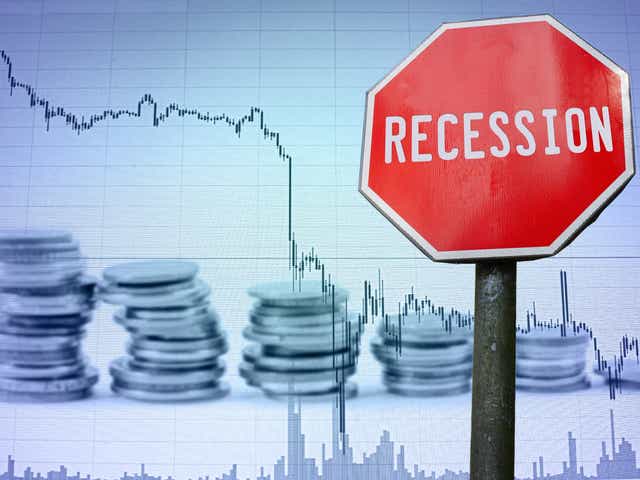The U.S. economy turned in its worst performance ever in the second quarter as the COVID-19 pandemic shuttered businesses across the country and consumers hunkered down at home.
The nation’s gross domestic product, the value of all goods and services produced in the U.S., contracted at a staggering seasonally adjusted annual rate of 32.9% in the April-June period, the Commerce Department said Thursday.
Economists surveyed by Bloomberg had forecast a 34.8% drop in GDP. To put the plunge in perspective, it was about three times larger than the previous largest drop in quarterly output.
“The GDP numbers are mind-boggling,” says Ian Shepherdson, chief U.S. economist of Pantheon Macroeconomics.
The free-fall was driven by a historic 34.6% pullback in consumer spending as states closed down nonessential businesses such as restaurants, malls and movie theaters, and Americans avoided public gathering spots and travel out of contagion fears. But nearly every corner of the economy was battered, including business investment and stockpiling, housing and exports, though trade overall and government outlays added to growth.
The contraction followed a 5% slide in economic output in the first quarter.
But the nation’s steepest-ever recession is also expected to be the shortest, with consumer spending, job growth and other key measures bouncing back sharply in May and June as states began allowing businesses to reopen in phases and many employees were rehired.
About $2.5 trillion in federal government aid also propped up spending, including forgivable loans to small businesses that retained or brought back workers, as well as $1,200 checks to individuals and a $600 supplement to weekly state unemployment benefits.
But recent spikes in coronavirus cases across much of the South and West have led at least 20 states to pause or roll back reopening plans, dampening the anticipated recovery in the second half of the year. The number of hours worked in states such as Texas, Florida and Arizona recently has declined, according to Homebase, a supplier of employee scheduling software.
After the nation recouped about a third of the 22 million jobs lost early in the crisis in May and June, a chunk of those gains could be erased in July with millions of jobs shed, says economist Kathy Bostjancic of Oxford Economics.

Many analysts still expect the hot-spot states to resume reopening after the outbreaks are tamed in the next month or so, helping America’s economy bounce back and dodge another recession. Scott Anderson, chief economist of Bank of the West, estimates the economy will grow an annual rate of 17.3% in the third quarter and 4.9% in the fourth quarter, assuming Congress passes another $1.5 trillion to $2 trillion stimulus package.
With some businesses closing for good and millions of workers laid off permanently, Barclays reckons the nation’s economic output won’t return to its pre-pandemic level until early 2022. And Moody’s Analytics figures a return to pre-pandemic employment levels won’t come until 2023.
Consumer spending nosedives
Consumer spending plummeted 34.6%, the largest drop on record, after sliding 6.9% in the first quarter. The state shutdowns and Americans’ contagion fears combined with massive layoffs, prompted shoppers to halt much of their discretionary outlays.
Consumption makes up about 70% of economic activity.
Business investment tanks
Business investment sank a record 27%, after a 6.7% drop in the first quarter. The culprits were business and factory closures, along with uncertainty about the outbreak’s economic effects. Spending on equipment such as computers and factory equipment dropped 37.7%, while outlays on buildings, oil rigs and other structures declined 34.9%.
Companies draw down inventories
Instead of adding to their stockpiles, firms drew from existing supplies to meet sharply reduced demand, contributing nearly 4 percentage points to the drop in GDP.
Residential investment plunges
Housing construction and renovation broke a string of three straight quarterly increases, tumbling 38.7%. Despite historically low mortgage rates, the outbreak suspended construction projects and prompted homebuyers to stay on the sidelines.
Overall, though, housing is the economy’s biggest bright spot, with housing starts rebounding strongly in May and June after slumping in March and April as rock-bottom mortgage rates attracted buyers.
Government spending rises
Government outlays represented the biggest positive for the economy as federal spending jumped 17.4%, bolstered partly by the stimulus measures. The increase more than offset a 5.6% drop in state and local government spending amid falling tax and other revenue and school closures.
Trade aids growth
U.S. exports fell 64.1%, hammered by stricter lockdowns overseas than in the U.S., while imports decreased 53.4% as Americans substantially cut their spending amid the shutdowns.
Since the drop in imports more than offset the decline in exports in absolute terms, the nation’s trade gap narrowed, adding slightly to economic growth.
Bottom line
The economy is already on the mend but faces a tortuous comeback in the face of virus flare-ups in parts of the country and the risk of a second COVID-19 wave in the fall. A more sustained rebound in consumer spending isn’t expected until a vaccine is available sometime next year and Americans are emboldened to travel and spend freely.
Even then, deep bruises will linger as a result of permanently laid-off workers who will struggle to find new positions, or retire, and businesses that will never reopen.
“We expect it will take years for that damage to be fully reversed,” says Andrew Hunter, senior U.S. economist at Capital Economics.

Leave A Comment